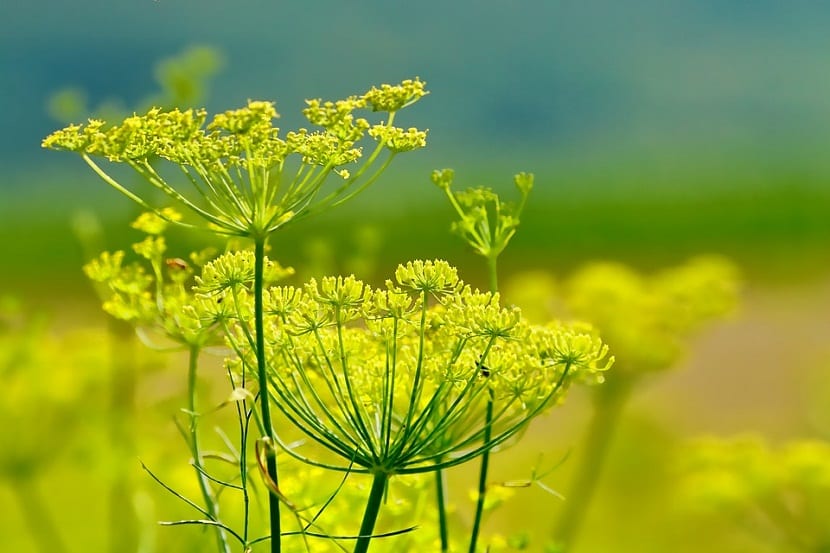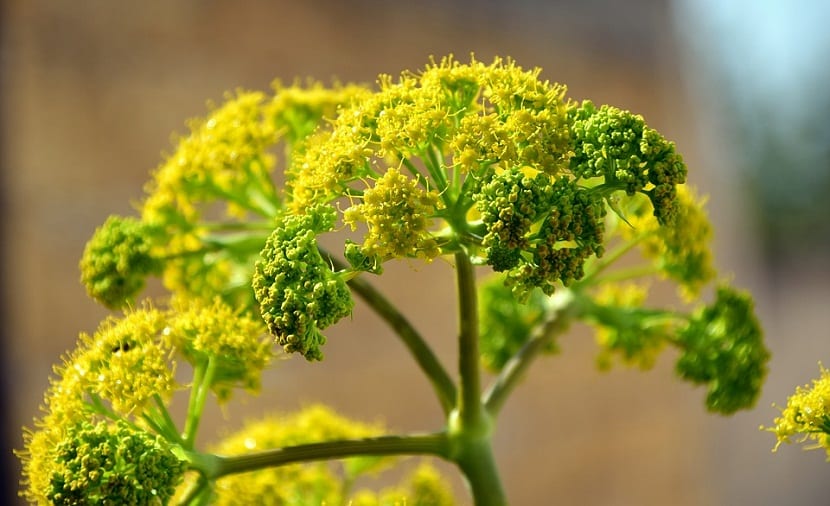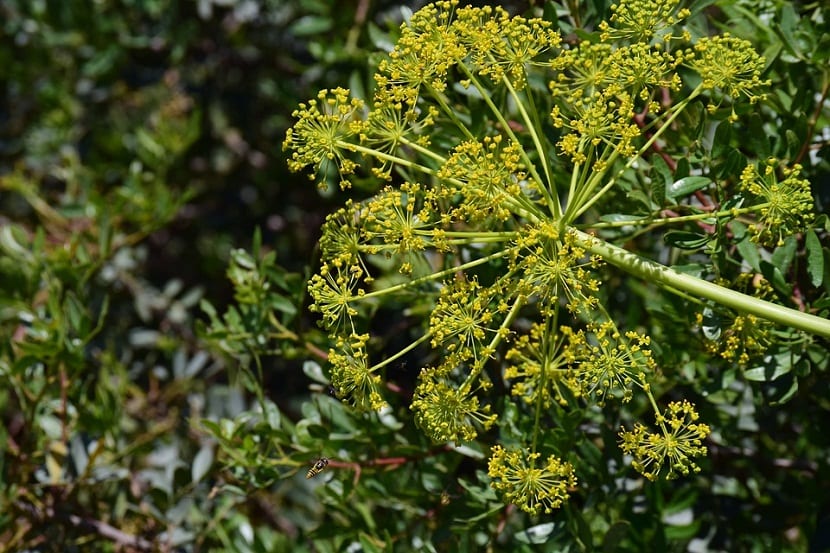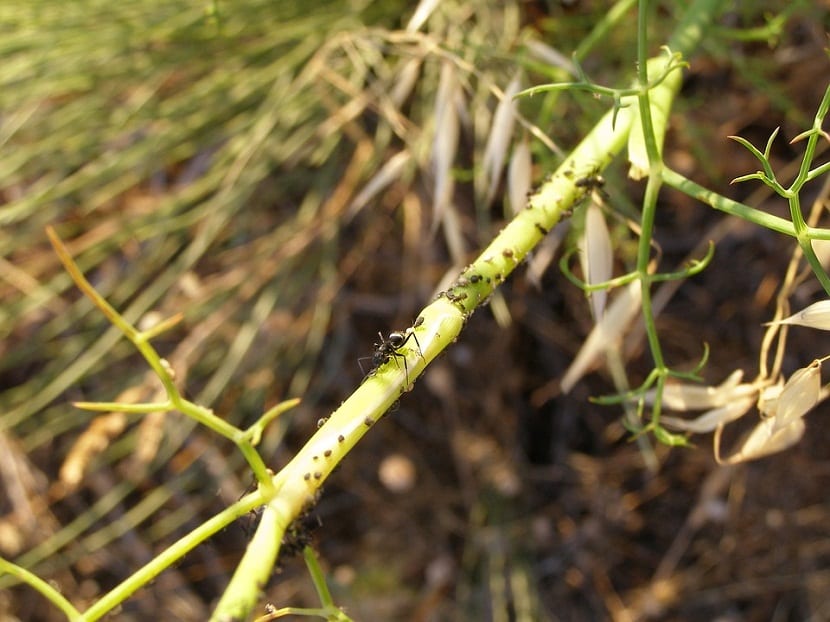
Fennel, which is part of the botanical family Umbelifereae or Apiaceae (along with coriander, celery, dill and parsley) and comes from the Mediterranean.
This plant stands out mainly because its leaves and seeds have a pleasant aroma, in addition to the distinctive yellow hue of its flowers.
Features

This plant is distributed around the world in temperate climates, since it is characterized by being a perennial herb It was formerly used for medicinal purposes, although its stems and leaves also have uses in gastronomy.
Fennel, also called "holy grass"It is a herbaceous plant whose main characteristic is usually its large dimensions, and it has the ability to live for more than two years.
In addition, it stands out for being an aromatic herb which is mostly cultivated for the purpose of using it in kitchens and / or to take advantage of its great medicinal properties. And despite being a herbaceous plant they are normally small as we have mentioned, fennel is capable of growing a lot and even reach an approximate height of two meters.
Likewise and within the botanical characteristics of fennel are the following:
- It has several straight stems which sprout from the root and can grow to a length of more than two meters.
- Its light green leaves are thin, long and have a needle shape.
- It has various clusters of axillary flowers, which have approximately 30-40 flowers of a light yellow tone, which generate the inflorescence.
- They offer small and oval fruits, which have minimal striations around them.
Farming

The most normal way to grow fennel is to do it through the seeds of this plant. For that, it is necessary to choose an area in a garden which allows you to expose yourself directly to the sun and grow on land that has an adequate drainage system.
It is a crop that can be carried out without problems through direct sowing, so it will not be necessary to use a seedbed, despite the fact that it is equally possible to do it in a nursery when you want to be able to control the crop during its early stages, especially when it is done in areas that present late frosts, since the sowing will be carried out at the end of winter and beginning of spring once the last frosts in the area are over.
La sowing and / or transplanting distance should be approximately 30 cm between each plant and about 90 cm between each line, placing the seeds at a depth of at least 4-5 mm.
Despite the fact that this plant has the ability to adapt to practically all types of soil, it is convenient that the land in which the fennel cultivation will take place has to be very loose and have a high nutrient content, since in this way you can get a foliage that stands out for being more tasty and tender.
30 days and after sowing it will be possible to transplant the plant to the final place where it will grow. You have to keep in mind that the afternoon before the transplant day it will be necessary to water the area and apply a little compost in order to make it quite soft and cushioned.
The seedlings must be carefully removed trying not to damage the roots and stems too much, then you have to insert them into holes and cover them with soil, taking special care to then water it lightly, being essential to maintain a distance of 25-35 cm between each plant.
The task of coating the fennel should be carried out at least three or four weeks after having carried out the transplant.
It is only a matter of adding soil little by little around the base of the stems in order to promote their proper development and obtain a more tender foliage. When you finish doing it, must be watered carefully.

It is essential that when growing fennel the plant has enough space in order to develop properly, that is why should be offered the opportunity to grow in deep soils where the land is dry and there is adequate drainage.
Apart from this, quality organic matter must be offered to the soil adding a little compost before sowing the plant.
This plant usually needs direct exposure to the sun's rays to be able to develop in optimal condition, so that when transplanting it to its final place, it is necessary to make sure that it has a good entrance of light.
After two and a half months of sowing the fennel, it will be possible to start harvesting its leaves. For this you have to use clean scissors that allow you to cut the stem from its base, without worrying because it will grow again.
When this plant is grown in order to take advantage of its bulb, it is more convenient to periodically cut the stems so that the development of the bulb is optimized. In this way and after at least three and a half months it will be possible to start harvesting the bulb.
Varieties
- Florence fennel: Equally called sweet fennel, consists of a characteristic variety of the spring season which is mainly planted in southern Europe.
- Carmo: It has a firm, round, white and smooth bulb.
- Argon: It is a fairly early variety whose bulb is white, thick, dark and round.
- Genius: It has a really firm and round bulb, which is medium in size.
- -Pollux: It has a fairly rounded bulb that is usually large.
Care

It is not advisable to plant fennel in acidic soil under any circumstances, because it does not tolerate it; it is best to opt for a soil containing large amounts of mineral salts, manure and humus.
Apart from that it has to be directly exposed to the sun throughout the day, since it prefers light and there is no risk of excessive exposure.
Perfectly withstands all kinds of temperatures; however and the most convenient thing is that they are not very low because it could affect their development. It is a plant that requires constant and relatively abundant watering.
Fennel does not tolerate water stress wellTherefore, by not receiving enough watering, it will not be possible for the bulb and the aerial part to grow correctly. It is possible to collect the buds directly for consumption when they are greater than 10cm wide.
Plagues and diseases
This plant usually has a great resistance to both pests and diseases, so it is most likely that they arise as a result of a disorder caused by improper care, mainly highlighting pests by gray worms and aphids or diseases such as Botrytis.